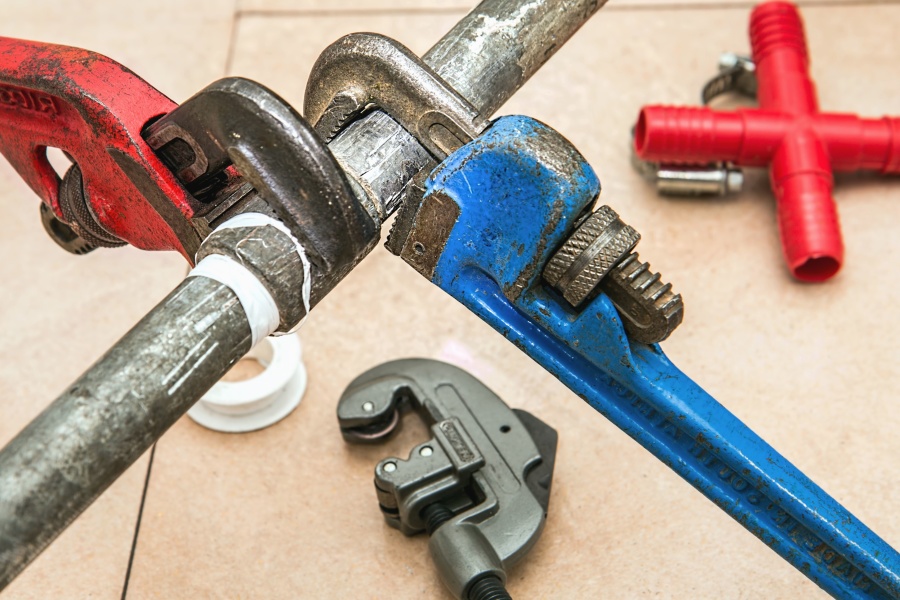With a host of options, many customers are retrofitting underfloor heating. Installing underfloor heating into an existing property can pose some issues but with this article, you will realise that installing underfloor heating in any property is not only possible, but easy too.
In the retrofitting underfloor heating market, there are two categories of systems: low profile, pre-routed gypsum boards and moulded castellated panels with a thin layer of self-levelling compound.
Option 1 – Low profile, pre-routed gypsum boards
With some systems, there is a need for a layer of screed to be poured over the plastic pipe loops of a system, necessitating drying time. In an existing property, this can be problematic, especially when the curing of screed can take some days.
This option is a ‘dry option’. Instead of screed or concrete to protect the pipes, they are laid into pre-touted channels in gypsum boards. This type of kit is best suited to properties with low to medium heat loss – in other words, a property that is already well insulated, including the sub-floor.
There many features to this underfloor heating system, including;
- Minimal height build-up – of both options, this is the one that offers the lowest total height build-up of the floor. It will vary depending on supplier and manufacturer but the lowest profile is just 15mm. Flooring coverings, including tiles, can be laid directly on top making this is the ideal option when floor to ceiling height in a room is limited.
- Good heat output – output is around 80W per m² and in a property that is well-insulated, this will be an effective means of heating it.
- Acoustic benefits – the gypsum boards are dense thus helping to reduce airborne and impact noise (i.e. when you walk across the floor). This make this solution ideal for rooms on upper levels.
- Ideal base – no matter what flooring solution you choose, it is the ideal base including tiles, marble and stone products. This is because there is minimal movement and deflection in the boards.
Option 2 – Moulded castellated panels with self-levelling compound
It can be hard to imagine what moulded castellated panels look like but some people have likened it to a whole floor of panels with a Lego-like finish!
These panels are the latest developments in retrofitting underfloor heating systems, with packs complete with self-levelling compound.
This compound boosts the heat output making is the popular option when the property has a higher heat loss. This is common in properties where insulation levels are difficult to improve or where there are large amounts of windows or glazed doors, such as bi-folding doors, an increasingly popular option in many modern homes.
Key features of this option include;
- Increased flexibility – these castellated panels are easily cut to size, making the installation of the panels easier and more flexible. The panels can also accommodate various tube layouts.
- Low profile – these panels have a low profile of 22mm but again, how much floor height is added depends in the solution you choose, and how the system is installed.
- Can dry in 24 hours – unlike other screed applications that can take 72 hours or more to cure, this system is usually dry in 24 hours.
- Level floor finish – there is no need to level the floor a second time as this solution includes levelling as part of its installation.
- Ideal base – this option also provides an ideal base for all floor coverings. The high compressive strength and minimal movement in the floor is perfect for tiles, marble and stone products.
Are there any other options?
There are other systems and possibilities coming to the market including lightweight, pre-routed panels, an option worth researching if your property has high levels of insulation.
However, with some systems, the underfloor heating panels may be too lightweight to offer a stable and firm platform on which the top layer of flooring can be laid. This may necessitate another layer to act as a structural deck which adds more height to the overall system, not what you are looking for in a retrofit system.
The installation process
If your property is well-insulated, time becomes the driving factor being which system is the one to use.
For example, when time is of the essence and the job must be completed quickly, the pre-routed gypsum option is ideal. In most cases, the systems and floor coverings can be installed on the same day.
If levelling of a floor is needed and time is not too pressing, then castellated panels with self-levelling compound is a solution. Leaving you with a level floor surface, it can take up to 72 hours in some cases for the compound to dry. But the level floor makes the perfect base for a range of luxurious floor coverings!

